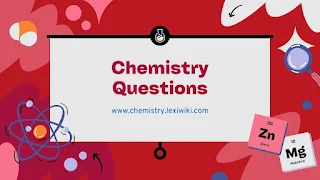Questions on Electromagnetic Induction
20 Multiple-Choice Questions: Electromagnetic Induction
1. What is electromagnetic induction?
A) Generation of electricity using sound waves
B) Creation of magnetism from static charges
C) Induction of voltage by changing magnetic fields
D) Transmission of electricity without wires
E) Creation of electricity by friction
2. Who is credited with discovering electromagnetic induction?
A) Isaac Newton
B) André-Marie Ampère
C) Michael Faraday
D) James Clerk Maxwell
E) Nikola Tesla
3. According to Faraday’s Law, an electromotive force (emf) is induced when:
A) Current is constant in a wire
B) Magnetic field is stationary
C) Magnetic flux through a coil changes
D) Voltage remains steady
E) Coil temperature increases
4. Which of the following can increase the induced emf in a coil?
A) Decreasing the number of turns
B) Slowing the magnetic field change
C) Using a thinner wire
D) Increasing the rate of change of magnetic flux
E) Keeping the magnetic field constant
5. The SI unit of magnetic flux is:
A) Henry
B) Tesla
C) Gauss
D) Volt
E) Weber
6. What happens when a magnet is pushed into a coil of wire?
A) A constant current flows
B) Heat is produced but no current
C) No effect occurs
D) A current is induced
E) The wire becomes an insulator
7. Which of the following best describes Lenz’s Law?
A) Induced current enhances magnetic field change
B) Induced emf creates heat only
C) Induced current opposes the change in magnetic flux
D) Magnetic field is not involved in induction
E) Current flows opposite to voltage
8. What is the direction of the induced current determined by?
A) Ohm's Law
B) Ampère’s Law
C) Faraday’s Law
D) Lenz’s Law
E) Coulomb’s Law
9. A transformer works based on which principle?
A) Joule heating
B) Magnetic levitation
C) Electromagnetic induction
D) Electric resistance
E) Electrostatic force
10. Which factor does not affect electromagnetic induction?
A) Speed of magnet movement
B) Number of coil turns
C) Magnetic field strength
D) Type of conductor insulation
E) Area of coil loop
11. In a generator, mechanical energy is converted into:
A) Light energy
B) Thermal energy
C) Magnetic energy
D) Chemical energy
E) Electrical energy
12. The induced emf is directly proportional to:
A) Magnetic permeability
B) Square of current
C) Rate of change of magnetic flux
D) Temperature
E) Number of electrons
13. A closed loop is placed in a magnetic field that is not changing. What happens?
A) Heat is generated
B) EMF is induced
C) Current increases
D) No emf is induced
E) Magnetic field collapses
14. When the magnetic field through a coil is reversed, the induced current:
A) Stops
B) Doubles
C) Reverses direction
D) Remains constant
E) Becomes zero
15. The device that stores energy using electromagnetic induction is:
A) Battery
B) Capacitor
C) Inductor
D) Resistor
E) Diode
16. What is the function of the core in an electromagnet or transformer?
A) To cool the coil
B) To store current
C) To amplify sound
D) To concentrate magnetic flux
E) To insulate the coil
17. Eddy currents are:
A) Useful in generating voltage
B) Induced currents in insulators
C) Resistance-free currents
D) Circular currents induced in conductors
E) Magnetic fields in semiconductors
18. Faraday’s Law states that induced emf is equal to:
A) Magnetic field times distance
B) Rate of change of charge
C) Negative rate of change of magnetic flux
D) Voltage divided by resistance
E) Mass divided by current
19. Which configuration would produce the largest induced emf?
A) A weak magnet moved slowly through a single coil
B) A strong magnet held stationary inside a coil
C) A coil with few turns in a weak field
D) A strong magnet rapidly moving through a tightly wound coil
E) A copper plate near a magnet
20. Which application uses electromagnetic induction?
A) Electric fan
B) Hairdryer heating element
C) Light bulb filament
D) Electric generator
E) Transistor
Answers with Explanations
1. C – Electromagnetic induction refers to the production of voltage (or emf) due to changing magnetic fields.
2. C – Michael Faraday discovered electromagnetic induction in 1831.
3. C – Faraday’s Law says an emf is induced when there is a change in magnetic flux.
4. D – A faster change in flux induces a larger emf.
5. E – The unit of magnetic flux is the Weber (Wb).
6. D – Moving a magnet into a coil induces a current.
7. C – Lenz’s Law states the induced current opposes the flux change.
8. D – The direction of current is given by Lenz’s Law.
9. C – Transformers work through electromagnetic induction.
10. D – Insulation type doesn’t affect induction; it's the conductor and field that matter.
11. E – Generators convert mechanical energy to electrical energy.
12. C – Emf ∝ rate of magnetic flux change.
13. D – A constant field produces no emf.
14. C – Reversing the field reverses current direction.
15. C – Inductors store energy using magnetic fields.
16. D – The core concentrates and channels magnetic flux.
17. D – Eddy currents are looping currents induced in conductors.
18. C – Faraday’s Law: emf = – dΦ/dt, where Φ is magnetic flux.
19. D – Rapid movement of a strong magnet through many coil turns maximizes emf.
20. D – Electric generators operate on electromagnetic induction.
Dive into the groundbreaking science of neurotransmitters—your brain’s invisible architects—in Chemical Harmony: How Neurotransmitters Shape Our Lives (2025). This meticulously researched book reveals how serotonin, dopamine, GABA, and other brain chemicals silently orchestrate every aspect of your existence, from decision-making and relationships to mental health and emotional resilience.Click here to buy
Share Online!

